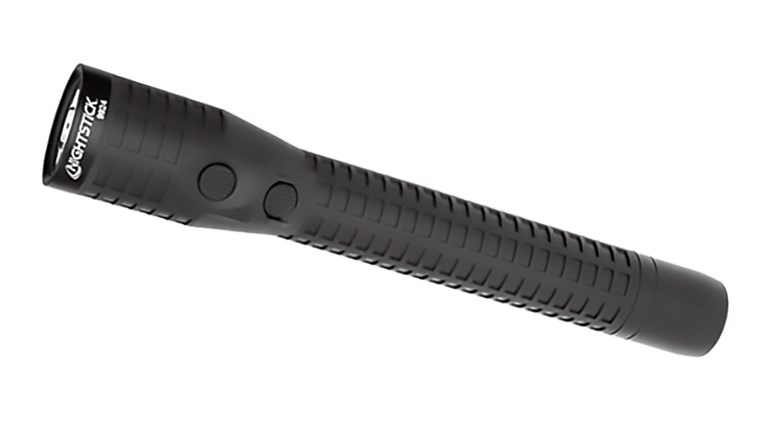
It’s not every day you draw a sheep tag, so when you do, you want to be ready. But what does “ready” look like? Here’s a quick rundown of what you’ll want to make sure you have when you go after a once-in-a-lifetime trophy.

Binoculars
First things first, you’ll want a solid set of binoculars. For that reason, I opted for Leupold’s binoculars. While I couldn’t afford the top-tier optics (keep in mind, my tag as a nonresident was over $2,000), I did get into Leupold’s Pro Series of binoculars. The BX-4 Pro Guide HD binoculars come in three different magnifications: 8X, 10X, and 12X. It never hurts to have more powerful magnification, especially when trying to pick out sheep or judge horn length for legal requirements, and for what these binos offer you get quite the bang for your buck. Leupold even has the new Gen 2 model, featuring a tripod adaptor port, a desirable trait for sheep hunting to take some of the load off your neck and arms during long glassing sessions. MSRP: $769.99

Spotting Scope
Again, knowing I couldn’t afford the most expensive glass due to the expense of the tag, I opted for Leupold’s SX-4 Pro Guide HD spotting scope with a 20-60x magnification range. Frankly, the SX-4 has a better magnification range than the Santiam series (27-55 magnification), which is the next step up and costs almost twice as much. And there’s less than 3 ounces difference between the two spotting scopes when looking at weight, which is a major factor when it comes to sheep hunting. Again, I opted for the higher magnification, as I wanted to maximize my range with my spotting scope and leave as little of a magnification gap as possible between my binoculars and spotting scope, so this pairing was perfect. MSRP: $999.99

Camo
If you didn’t know by now, optics are important when hunting sheep, as they’re difficult to spot. But sheep are just as vigilant—if not more so—than you are, and they’re naturals at picking out movement. That means camo is key. Browning’s Ovix camo couldn’t have blended in better with the terrain in which I was hunting Rocky Mountain bighorn sheep. Having this on both my clothes and my pack (which is equally important) did a fantastic job hiding me from prying eyes. How do I know this? Because for the one week I was able to hunt, we saw sheep almost every day we went out. I made sure my bases were covered for weather, as hunting in mid-September in Colorado means needing to be prepared for anything. Browning makes such a wide variety clothing in the Ovix pattern, I certainly was ready for whatever we faced weatherwise. Between the Kanawha rain pants/jacket and the early-season pants and shirt, I was set. Kanawha Rain Pant/Jacket MSRP: $99.99 each; Early-Season Pant: $89.99; Early-Season ¾ Zip Shirt: $64.99

Backpack
Sheep hunting by nature is a much more nomadic style of hunting than your average deer hunt. That said, I knew I needed a larger pack, especially since I was carrying more gear than I normally would be on an average hunt, even by Western hunting standards. The Browning Monroe 3600 fit the bill perfectly, as it offered more than enough room to pack a tripod and all my optics, plus it includes a rifle cradle and a lightweight, carbon-fiber pack frame. You’ll definitely need this latter bit if you kill a sheep, as it will likely be more remote than anywhere else you may ever hunt. The fully adjustable harness and waist-belt system are also a huge benefit for distributing loads up steep inclines. MSRP: $349.99

Boots
One often overlooked piece of equipment, especially when sheep hunting, is footwear. I knew I’d be logging miles in relatively steep terrain, but the weather was good (most of the time) and even when it wasn’t, a rainy day in Colorado in September isn’t too terribly cold. I went with the LaCrosse MS Ursa boot, primarily because I wanted a higher boot—the Ursa MS is 7-inches tall—to protect my ankles when walking up all the rocky terrain I knew I’d encounter. For that same reason, I was careful about picking a boot with a great outsole and footbed, and boy did this boot pay off big time. Even after days of walking on solid rock, my feet weren’t the slight bit sore thanks to the Vibram sole and bi-fit board, which combine many components of the boots into a single piece, making the boots light weight while maintaining support, which is crucial when spending days on rocky surfaces. Rounding out the boot is the HexGuard rand, which makes it abrasion resistant, meaning the boot will last even when scraped against rough surfaces, and protects your toes. MSRP: $300.00

Rifle/Cartridge
Last but certainly not least you’ll want a lightweight rifle, as hiking at altitude wears on your respiratory system no matter how good your cardio might be. I’ve always liked Kimber rifles because they’re extremely lightweight, and I prefer a Mauser-style claw extractor on my guns for reliability. As for chambering, sheep aren’t that big, so while your average 6.5 Creedmoor will get the job done, I didn’t want to take any chances, and wanted a round I knew could go through both shoulders if absolutely necessary to anchor a sheep where it stands. For these reasons, I took my Kimber Montana in .300 WSM. As far as ammo, I handloaded a Barnes 200-grain LRX bullet over 62 grains of Hodgdon H4350, which propelled the Barnes LRX to around 3,000 fps. I know that’s a bit overkill, but I wanted a bullet to stay together to smash bone (I planned on purposefully taking a shoulder shot to prevent any need to track my sheep). MSRP: $1,925.00

































